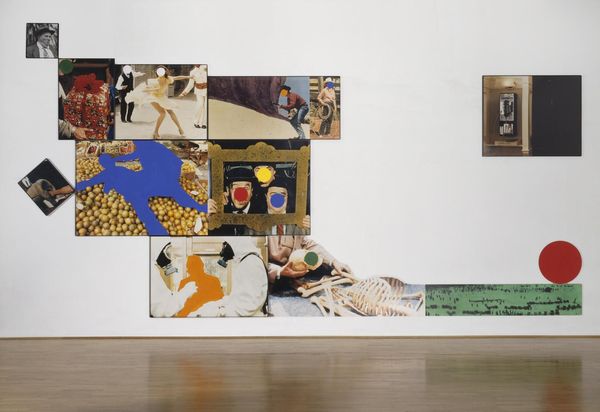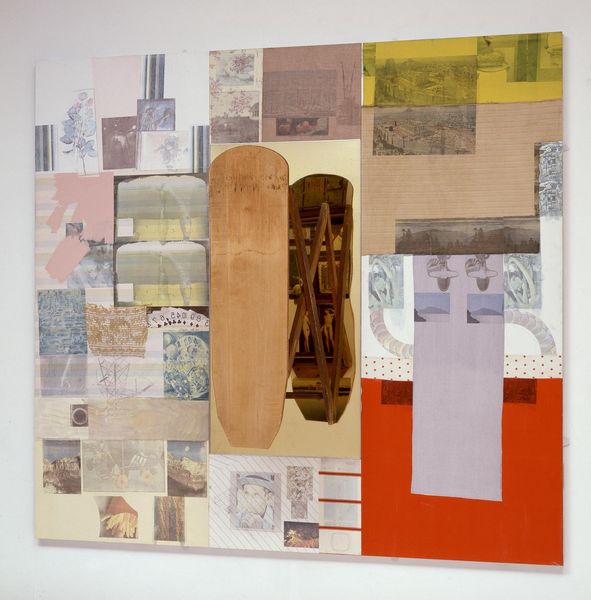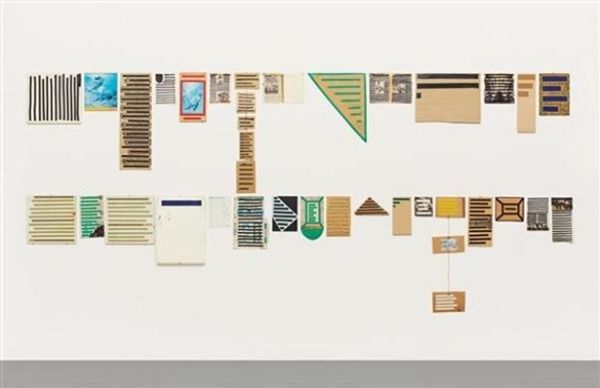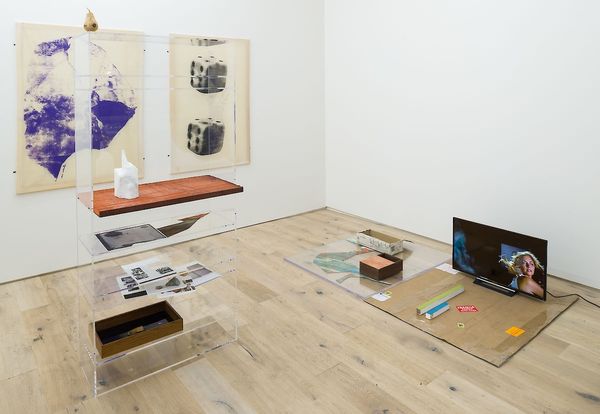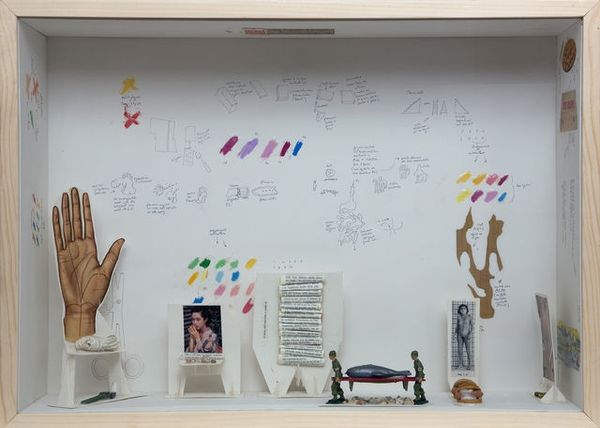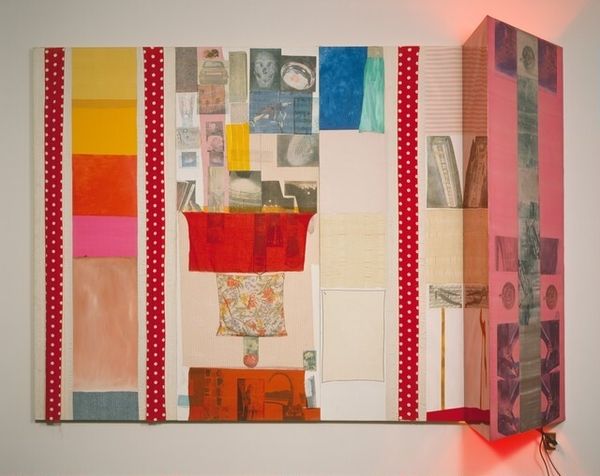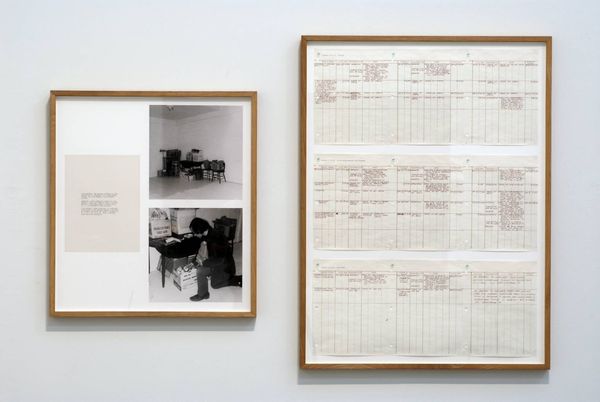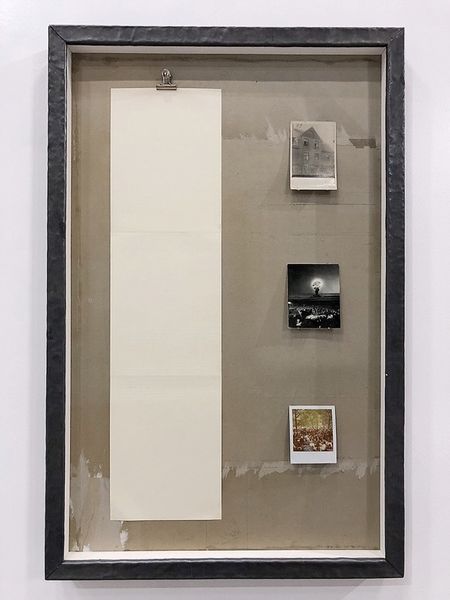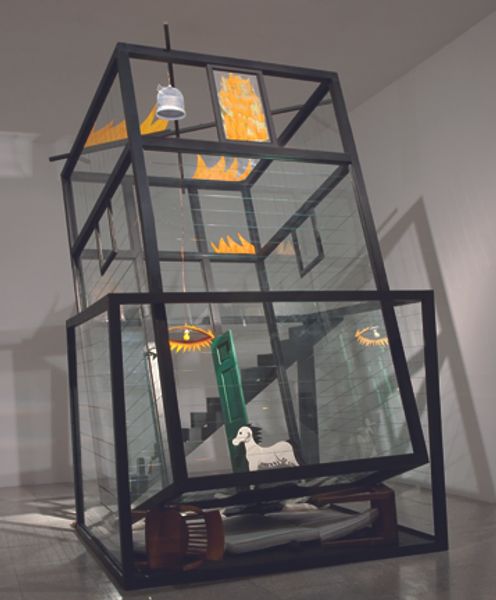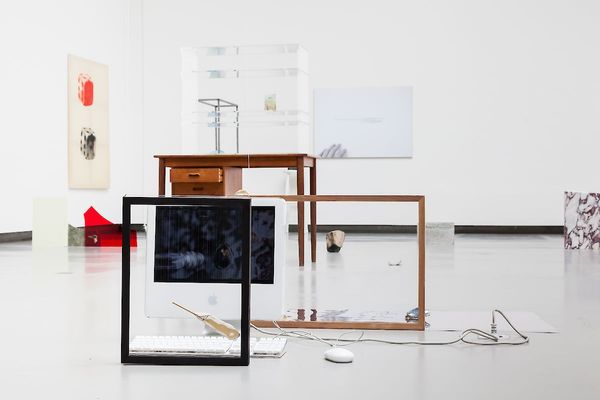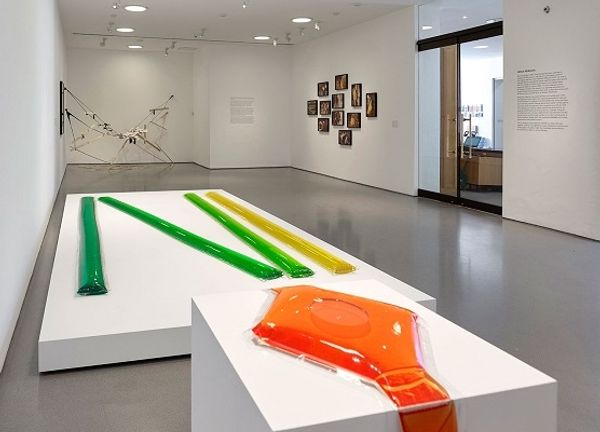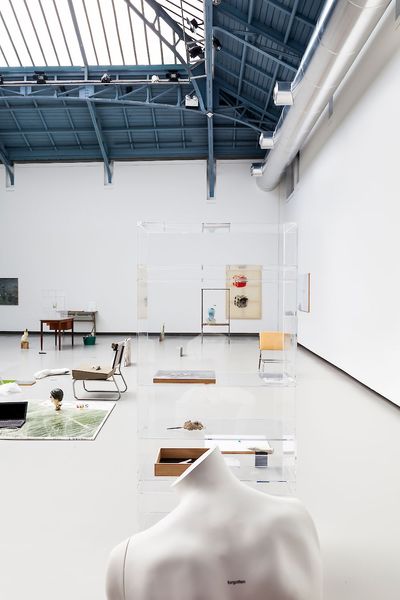
#
neo-dada
#
black-mountain-college
Copyright: © 2019 Robert Rauschenberg Foundation. All right reserved.
Curator: Right now we're standing in front of Robert Rauschenberg’s monumental mixed-media artwork, "Hog Heaven (Scale)," created in 1973. It’s quite a sight! Editor: My first thought? Total organized chaos. The sheer size and combination of textures pull you in, but I'm not sure what I’m supposed to be seeing. Curator: It’s classic Rauschenberg – layering, appropriation, found objects, you name it. This piece really showcases his "combine" aesthetic where painting and sculpture collide. Notice how he’s incorporated photography, acrylic, collage elements, even that jutting wooden beam and tire. Editor: That tire! It’s so… unexpected. And those disparate images, like old postcards, black-and-white portraits, sandwiched beside hamburgers? It’s a visual assault, but a strangely compelling one. What’s the hog part? Is it the messy overabundance of content? Curator: The "hog heaven" likely nods to an idealized, abundant state—perhaps reflecting on American consumer culture in the '70s, and all its excesses. But it's filtered through Rauschenberg’s particular lens. Those images become signifiers, open to individual interpretation. Editor: That makes sense. It's playing with our expectations of scale and visual hierarchy too. The beam sort of anchors everything, though it also throws it off balance. It’s heavy, concrete amidst all the fleeting images. Is that intended? Curator: Precisely! He prompts us to question how we assign meaning, particularly when familiar icons appear in unfamiliar contexts. Consider how psychological resonance is achieved when we glimpse such diverse visual triggers together. It’s like cultural memory is constantly being revised. Editor: So, it's less about deciphering one clear message and more about letting those images bounce off each other in your mind. Almost like dreaming… It is maximalism distilled and reconstituted, I guess. Curator: Exactly! He allows those visual echoes to resonate. Its a poignant commentary on the fleeting nature of images, objects, and their psychological hold on us over time. Editor: I get it. It’s both a product of its time and utterly timeless. The older I get, the more I feel the world as an assemblage of chaotic fragments. Curator: Ultimately it's that kind of ongoing resonance that makes Rauschenberg’s art continually captivating.
Comments
No comments
Be the first to comment and join the conversation on the ultimate creative platform.
